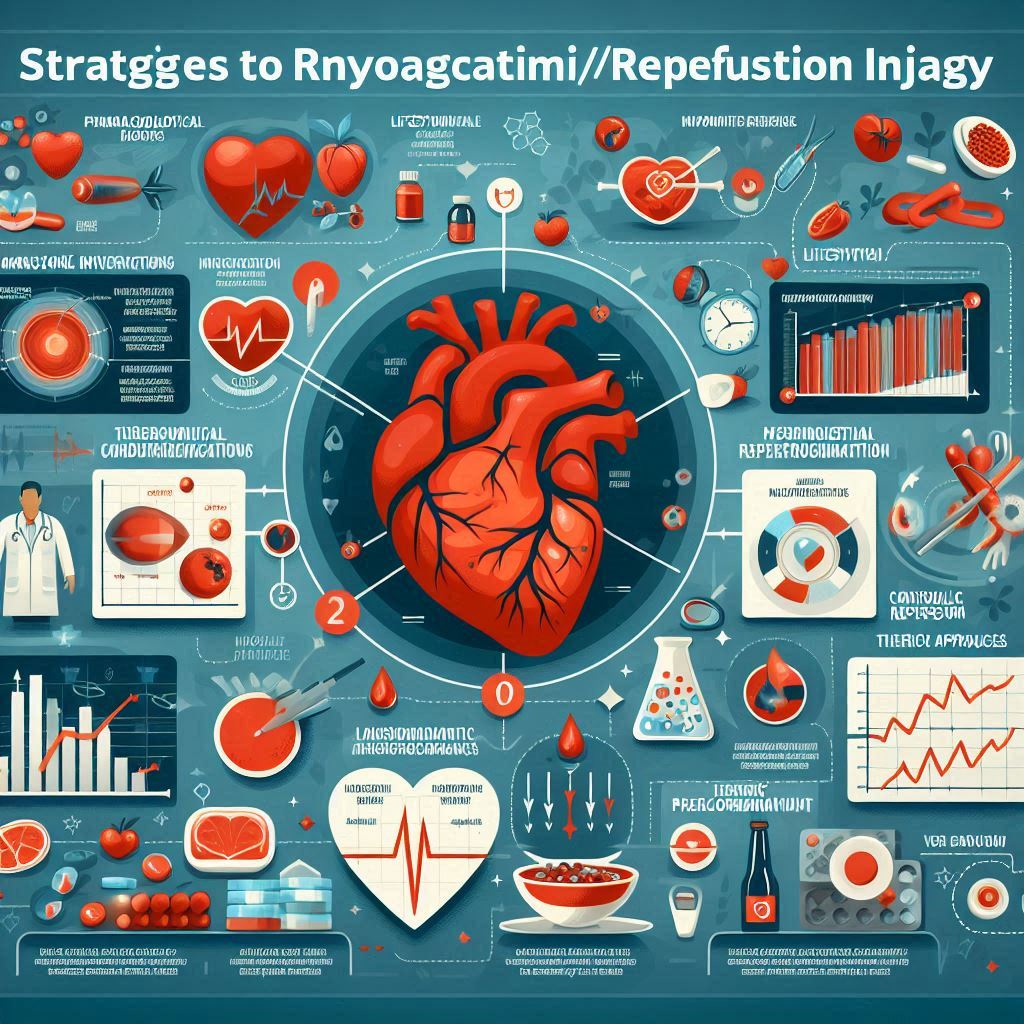Targeting Myocardial Ischemia/Reperfusion Injury: Beyond Revascularization
Introduction
Myocardial ischemia/reperfusion injury occurs when blood supply returns to the heart after a period of ischemia, potentially leading to significant damage due to oxidative stress, inflammation, calcium overload, and mitochondrial dysfunction. Implementing strategies to reduce this injury is crucial for improving cardiac outcomes and protecting heart tissue during and after episodes of reduced blood flow.
Ischemic heart disease remains the leading cause of mortality worldwide, claiming millions of lives each year. Despite advancements in medical science that have improved methods of revascularization — the restoration of blood flow to the heart — a critical aspect of myocardial damage, known as lethal reperfusion injury, continues to elude effective treatment. In this blog, we will explore the nuances of this phenomenon, the mechanisms at play, current therapeutic approaches, and future directions for research aimed at mitigating ischemia/reperfusion injury.

Understanding Ischemia and Reperfusion Injury
When blood flow to the heart is reduced or completely blocked, such as during a heart attack, the heart tissue becomes deprived of oxygen. This condition is known as ischemia. Revascularization procedures, which often involve angioplasty or bypass surgery, effectively restore blood supply to the affected area. However, this sudden influx of oxygen-rich blood also triggers a secondary injury known as reperfusion injury — a paradoxical worsening of tissue damage that can lead to additional myocardial cell death.
Mechanisms of Reperfusion Injury
Reperfusion injury results from a complex interplay of various cellular processes, including:
- Oxidative Stress: The sudden restoration of blood flow triggers a significant increase in reactive oxygen species (ROS), leading to damage to cellular proteins, lipids, and DNA, which exacerbates myocardial injury.
- Inflammation: The reintroduction of blood flow facilitates the infiltration of immune cells to the injury site, further enhancing inflammation and contributing to tissue damage.
- Calcium Overload: The resumption of blood flow may lead to an excess influx of calcium ions into cardiac cells, causing cellular dysfunction and ultimately resulting in cell death.
- Mitochondrial Dysfunction: Mitochondria, essential for cellular energy production, become impaired during the transition from ischemic to reperfused states, compromising energy supply and promoting cell death.
The Importance of Therapeutic Targets
Understanding these underlying mechanisms has elucidated numerous potential therapeutic targets. Researchers have identified various pharmacological approaches to protect the heart from reperfusion injury. These include:
- Antioxidants: Compounds that neutralize ROS can potentially reduce oxidative stress during reperfusion.
- Inflammation Modulators: Drugs aimed at curbing the inflammatory response may mitigate tissue damage.
- Calcium Channel Blockers: These can help prevent calcium overload during reperfusion.
- Mitochondrial Protectants: Agents that safeguard mitochondrial function may preserve energy metabolism in cardiac cells following reperfusion.
Current Approaches to Therapy
Over the last few decades, numerous clinical trials have attempted to translate these basic science findings into effective therapies for patients experiencing acute coronary syndromes. While some approaches show promise, many have not provided the expected benefits in clinical settings. This necessitates a deeper understanding of the complexities of reperfusion injury and a more tailored approach to treatment.
For instance, some studies have indicated that preconditioning the heart (exposing it to brief episodes of ischemia) can bolster its defenses against subsequent ischemia/reperfusion injuries. Other strategies involve the use of emerging therapeutic agents that specifically target the pathways identified in research, promising a more directed approach to protecting the myocardium.
For More Please Visit Here
Future Directions
The future of treating ischemia/reperfusion injury looks promising, as ongoing research continues to delve deeper into the mechanisms of myocardial protection. Here are several potential avenues:
- Personalized Medicine: With advancements in genetic research, therapies could be tailored to individual patient profiles, considering specific risk factors and genetic predispositions.
- Combination Therapies: Combining different therapeutic agents that target multiple pathways simultaneously may yield synergistic effects, improving myocardial protection during reperfusion.
- Novel Intervention Techniques: Techniques such as remote ischemic preconditioning and pharmacological preconditioning continue to be areas of intense research, providing exciting possibilities for clinical application.
- Biomarker Development: Identifying reliable biomarkers for predicting reperfusion injury can help clinicians make better treatment decisions in real-time.
Conclusion
While revascularization remains a critical component in the treatment of ischemic heart disease, it is clear that the management of reperfusion injury is equally crucial in preserving myocardial health. With a growing body of evidence supporting various pharmacological interventions, the hope is that more effective therapies will soon be available, reducing the burden of myocardial damage and improving patient outcomes. Ongoing research in this field will hopefully lead us to a future where myocardial ischemia/reperfusion injury is not only understood but also effectively managed, transforming the landscape of cardiac care.
Discover more from fuel for life
Subscribe to get the latest posts sent to your email.



